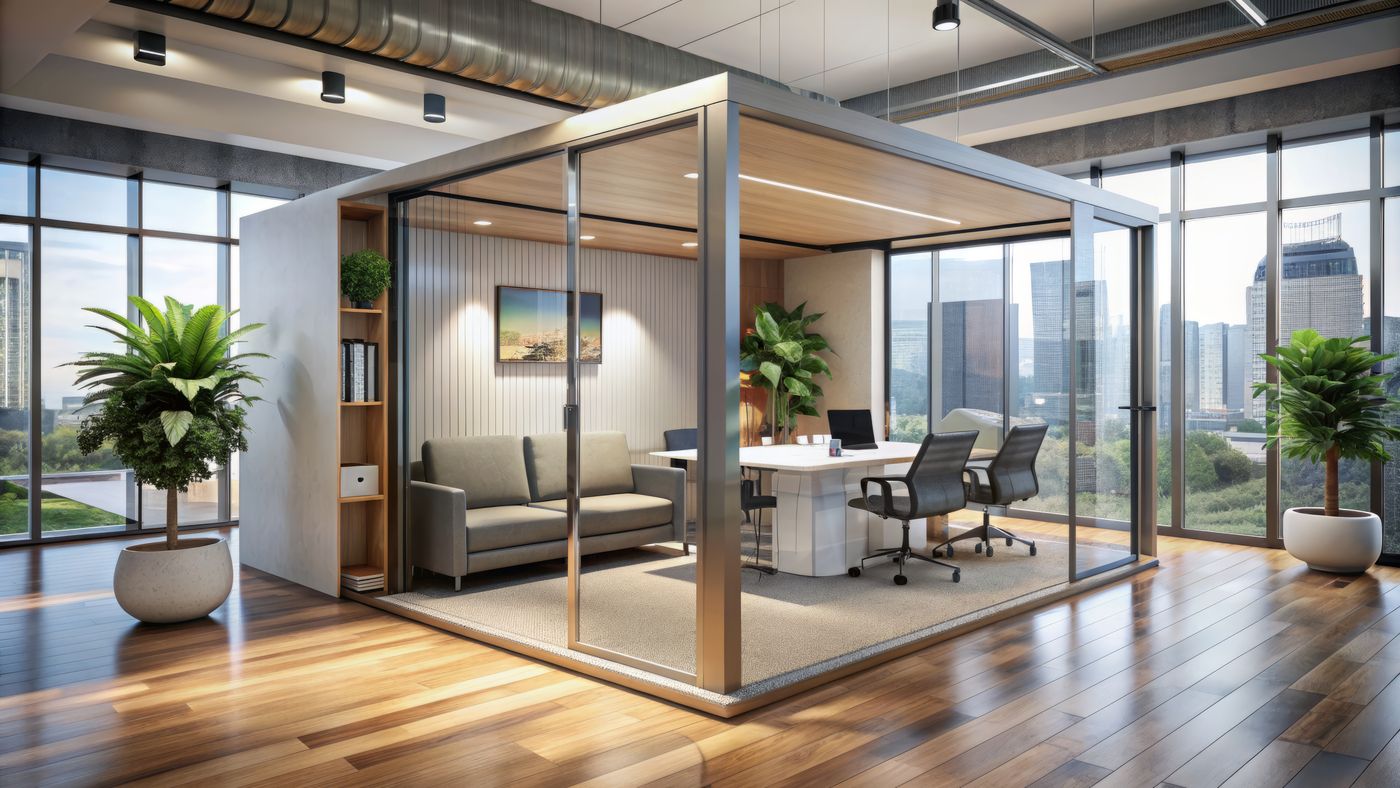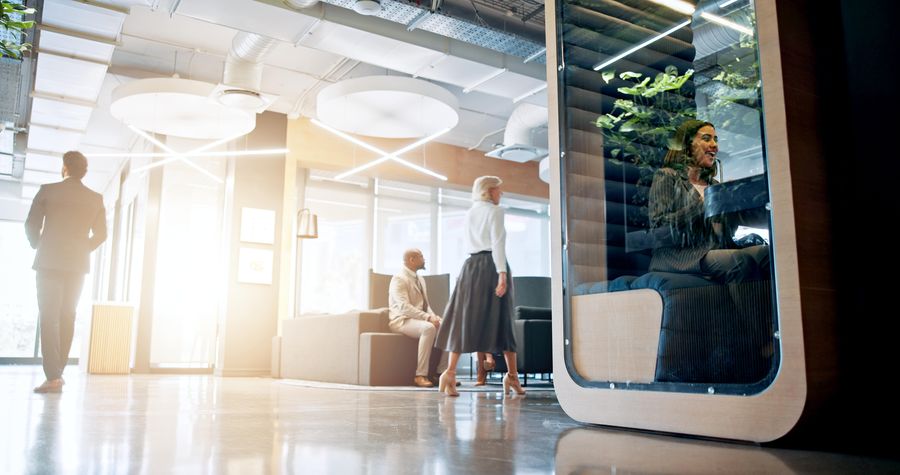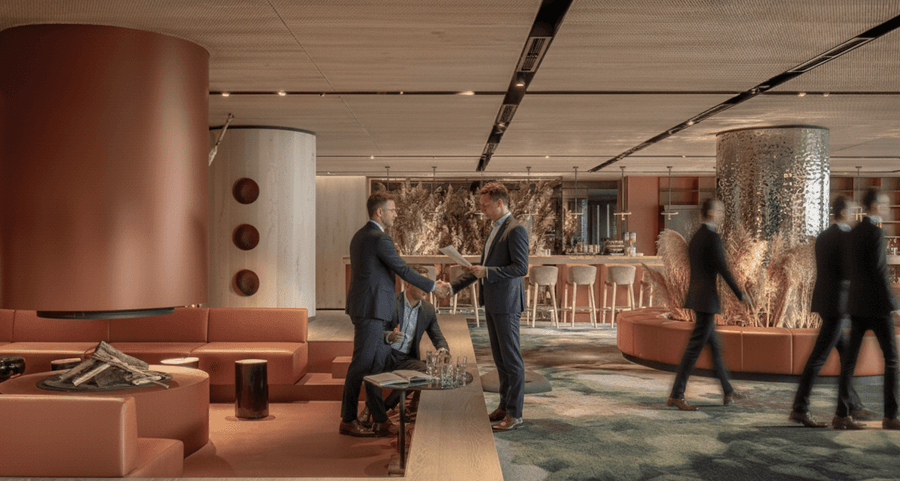The Future of Workspaces: Leveraging Office Pods and Modular Architecture

 Rob
RobRob
8th Aug 2025
🕰️ 4 min read (746 words)
In the ever-evolving landscape of office design, one trend stands out for its impact on productivity and flexibility: the rise of modular spaces. This shift is reshaping how office providers and professionals approach their environments. Drawing on insights from multiple sources, we explore how these innovations are addressing modern workplace needs.
The Growing Demand for Adaptable Workspaces
The demand for flexible work environments has skyrocketed, driven by the hybrid work model that has become the norm post-pandemic. Office pods and modular designs are at the forefront of this transformation, offering a unique blend of privacy and functionality within open office layouts.
Office pods, often perceived as cramped and antisocial, are being reimagined to meet contemporary needs. Companies like Room, known for their versatile and soundproof office pods, provide solutions that cater to both individual and small group needs. These snug, soundproof, and aesthetically pleasing pods cater to the demand for private workspaces in bustling offices. As noted by Kay Sargent from design and architecture consultancy HOK, the era of one-size-fits-all office designs is over. Today's workspaces must embrace diversity and flexibility to cater to various work styles and tasks (source).
For a thorough understanding of flexible workspace concepts, including modular pods and various workspace types, see our comprehensive guide on Workspace Definitions: Demystifying Modern Workspace Terminology.
Enhancing Productivity and Privacy

The need for spaces that allow employees to focus and work privately has never been more critical. The traditional open office, while fostering collaboration, often falls short in providing areas where employees can concentrate without distractions. Modular office pods from companies like Framery, which specialises in soundproof phone booths and meeting pods, address this gap by offering dedicated focus rooms and quiet spaces.
According to Hailey Mensik's article on WorkLife, the shift to remote work during the pandemic allowed employees to create personalised, productivity-enhancing home offices. However, returning to traditional office environments has highlighted the lack of similar quiet spaces (source). Office pods can help replicate the focused work environment of a home office within a corporate setting.
Addressing Real Estate Challenges
The commercial real estate sector faces significant challenges, including high vacancy rates and the need for flexible office spaces. Office pods and modular designs offer a practical solution to these issues. By optimising underutilised spaces such as hallways and corners, these pods maximise the use of available real estate while providing essential amenities. For example, Nook focuses on creating modular huddle pods designed to support various work styles and environments (source).
The adaptability of these modular solutions is particularly beneficial for businesses that need to downsize or reconfigure their office layouts. Pods from companies like Room can be easily assembled, disassembled, and relocated, making them a cost-effective and sustainable alternative to traditional office construction.
The Financial and Environmental Benefits

Building conventional meeting rooms and private offices can be prohibitively expensive. Modular office pods provide a more affordable option. Reports highlight that building traditional meeting rooms costs 55 percent more than installing office pods, making them an attractive choice for modern office tenants.
Moreover, modular furniture and architecture align with sustainable practices. The ability to reconfigure and reuse these structures reduces waste and the environmental impact associated with traditional construction methods (source).
For insights into reducing waste and carbon footprint during office refits, explore Reduced-Waste Fit-Outs: Navigating Regulatory Uncertainty and Building Value for a Greener, Smarter Office Space.
Catering and breakout spaces also benefit from modern design strategies— learn more about upgrading office kitchenettes to enhance workplace comfort and efficiency in Upgrading Small Office Kitchenettes in the UK: Costs, Benefits & Modern Trends.
Catering to Diverse Work Styles
One of the standout features of office pods is their ability to cater to various work styles and needs. For instance, a range of pods are often available, designed for different functions, from single-person focus booths to larger meeting pods. Companies like Framery and Nook ensure that employees have access to the right type of space for their specific tasks, enhancing overall productivity and satisfaction (source).
Conclusion
These solutions address the pressing needs of modern workspaces, providing flexibility, enhancing productivity, and offering significant financial and environmental benefits. By adopting these adaptable infrastructures, office providers and professionals can create dynamic, efficient, and appealing workplaces that meet the demands of today’s hybrid work model.
Embrace the future of office design with Leanspace's guidance and transform your office into a flexible, productive, and sustainable environment.


